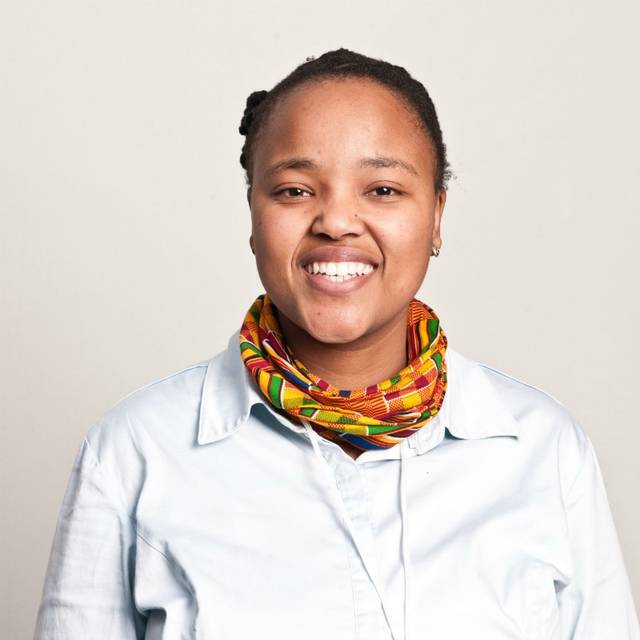
Alumni on the Move
Essential reading for resisting erasure: Women Writing Africa
African women have played important roles in both the history and intellectual life of the continent, but their contributions have been erased in a history written largely by and about men. Women Writing Africa is essential reading for anyone interested in recovering this history, writes Athambile Masola (South Africa & Rhodes University, 2010).
“Most people have a problem with the idea that black women write.” These are the words of writer and activist Lauretta Ngcobo, reflecting on the legacy of black women writers in South Africa. Ngcobo’s words capture the cultural imagination of women in Africa’s public discourse. The tradition of erasure can be seen as early as 1937 in a book titled Gold Coast Men of Affairs, written by Magnus Sampson. Researcher Audrey Gadzekpo describes this text as “an important and well-cited source of early Gold Coast socio-political history”. The text does not include the names of the women who participated in the nationalist history of the region. There are numerous examples of texts which erase the writing and thinking of women as though they were passive observers of the politics of their times. For more recent examples, one only needs to look Mcebisi Ndletyana’s 2008 book African Intellectuals in 19th and early 20th Century: South Africa and Bongani Ngqulunga’s 2017 biography on Pixley kaSeme. Both works ignore the women who were the contemporaries of the men they write about.
In an effort to undo this representation of women as objects of history, the series Women Writing Africa is a four volume anthology which collects writing by women from all four regions of the continent. Published at two year intervals in 2003, 2005, 2007 and 2009, the volumes feature writing from women in 29 African countries, dating from the fifteenth century BCE to present times. Together with other texts such as Margaret Busby’s historic collection Daughters of Africa: An International Anthology of Words and Writings by Women of African Descent from Ancient Egypt to the Present (1992) this series challenges the erasure of women’s voices. It shames those who have insisted that African women have made little to no contribution to the continent’s intellectual history and emancipatory struggle.
Part of the residue of colonialism is a narrow view of what constitutes knowledge. Inheriting the narrow ideas of a white supremacist patriarchal colonial view of the world means that legitimate knowledge has been reduced to something produced and controlled by a small group of people, most often men. Women Writing Africa debunks this idea by including aspects of orality into the series as it transcribes songs and folktales which have been passed down from generation to generation by mothers and grandmothers. Women’s songs are included as they carry with them stories about the past. Other texts in the series include letters, poems, extracts from novels, short stories, memoirs, essays and newspaper articles. The selection of texts which follows illustrates the expansive nature of knowledge and intellectual thought that should be celebrated as part of our inheritance.The earliest text in the series is found in Volume 4: The Northern Region. It is an inscription about Hatsheput, one of the few female pharaohs who ruled during the Eighteenth Dynasty in Egypt. The Hieroglyphic inscriptionis from the Speos Artemidos, an archaeological site on the Nile. In this inscription Hatsheput accounts for her leadership and the work she did, such as rebuilding ruins destroyed during conflict. “I have done these things…from my heart. Never have I slumbered and become forgetful, but have remade whole and strong what had decayed. I have raised up what was dismembered even from the earliest time when the Asiastics were in Avaris of the North Land,” she explains. These words give a glimpse into the kind of leader and visionary Hatsheput was and the ways she used her power to rebuild her region.
In Volume 3, the Eastern Region, the first text dates back to 1711. It is a letter written by Sultan Fatima binti Muhammad Mkubwa who was the ruler of the city-state of Kilwa Island, off the coast of present-day Tanzania. Sultan Fatima’s letter was written in Swahili in Arabic script by an unidentified scribe. The letter sheds light on the connections between Arabs and Africans on the East Coast during a time of trade and conflict between the regions. The letter is addressed to Mwinyi Jumaa “son of the late Sayyid Mwinyi Kaje,” informing him of her alliance with Arab leaders for protection. The narrative about Arab influence in Africa is often eclipsed by the narrative of British imperialism, which narrows conversations about the complexity of interactions across borders. In her letter the Sultan ends off on an interesting note about the Europeans who would have started occupying the region: “If a person intends to come to his or her home, he or she should come. There is peace, and no one will seize that person’s property. Tell this to all the people who are there, except the Europeans. They are the enemies of the Imam. Anyone who is a Swahili person will not be ill-treated by an Arab.” This letter also raises questions about why the Europeans were seen as the enemies of the Imam.
The earliest text in Volume 2, the Western Region and the Sahel, is dated 1739 written by Madlena Van Poppos. The letter was originally written in an unidentifiable African language—“arguably an ancient version of the Mina, Phla or Ewe languages spoken today on the stretch of the Gulf of Guinea between the Volta region of Ghana and present day Benin”— and translated into Dutch Creole, the language used by slaves. The letter raises questions about slavery in other parts of the continent and why a slave would be in a position to write a letter to the Queen of Denmark about her experiences. The letter was traced through a 1742 volume titled Periodical Accounts Relating to the Missions of the Church of the United Bretheren Established Amongst the Heathen. Madlena wrote the letter “in the name of more than 250 Negro women who love the Lord Jesus,” highlighting the fact that she may have been one of the few literate women who could make a case for their concerns. In this letter Madlena illuminates the nexus between missionary work, the slave trade and governments abroad who colluded in the project of colonialism. In her letter Madlena is using conversion into Christianity to gain the right to be heard by the Queen of Denmark.
The first text in Volume 1, the Southern Region, is a song from Lesotho. Dated 1842, the song’s author is recorded as anonymous mostly because of the communal nature of songs which do not necessarily belong to one individual. The process of the collecting such songs is political as it highlights the role of anthropologists who mine African culture without fully understanding the complexity of the ritual or song. In this case, the song is attributed to Thomas Arbousset who collected it in 1836 “three years after his arrival in Lesotho as one of the first three missionaries to proselytise there at the invitation of the King of the Basotho”. While the song is transcribed by Arbousset, it was translated by Willard Trask, a well-known researcher of African history. This begs the question, why is the translator not a black woman who would have had more cultural insight than a researcher? While the need for translation into English does not need to be expanded upon here, the politics and power of translation is glaring across all the volumes.
While these extensive volumes offer a wealth of knowledge on African women and their work and words, these books are yet to be integrated into mainstream spaces such as schools and university curriculum. These women’s names, ideas and songs are not general knowledge. While the volumes exist, more work needs to be done in ensuring circulation – Volume 1 is out of print in South Africa and Volume 2 is not available online.
Women Writing Africa is an example of ukuzilanda, an isiXhosa word meaning to fetch oneself. This idea underpins the work of memory done individually and collectively by accounting one’s history in order to make sense of oneself in the current moment. Without the names and words of women across the continent being part of our everyday experience we cannot fully appreciate African history. As a young African woman, I have been able to make sense of myself by understanding the lineages of the women who have written themselves into history in order to resist erasure.
About the author
Athambile Masola (South Africa &Rhodes University, 2010) has a Master’s degree in Education. She has taught English in Cape Town and Johannesburg, and is currently working on a PhD on Pan-African writer Noni Jabavu’s memoirs. She works as a lecturer at the University of Pretoria’s Education Faculty, training future teachers, and regularly writes on the subjects of education, feminism, and politics.







